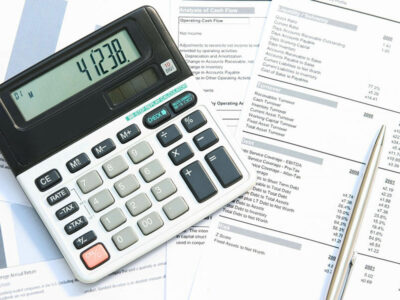
Because of their right to vote for corporate policies and elect board members, common shares are also known as ordinary shares or voting shares. If a firm goes bankrupt due to bankruptcy, common stockholders receive nothing. A shareholder, as previously defined, has a stake in the company and owns shares. Owning a share in a company gives you equity, or ownership interest, in the business. The life of common stock goes through a few phases, and understanding each step is important for putting the common-stock-outstanding number into proper perspective. In this scenario, the company is trying to create an appearance of rapid growth in earnings per share to appear like a solid investment opportunity.
Basic EPS = Basic Weighted Average Shares
Investors can find the total number of outstanding shares a company has on its balance sheet. Outstanding shares can also be used to calculate some key financial metrics, including a company’s market cap and its earnings per share. They are separate from treasury shares, which are held by the company itself. The term outstanding shares refers to a company’s stock currently held by all its shareholders. Outstanding shares include share blocks held by institutional investors and restricted shares owned by the company’s officers and insiders. A company’s number of outstanding shares is not static and may fluctuate wildly over time.
Weighted Average of Outstanding Shares Definition and Calculation

This usually means that they are performing well and have been having success. Outstanding shares are the number of a company’s shares available on the secondary market. Bankrate.com is an independent, advertising-supported publisher and comparison service.
Earnings per share (EPS) FAQs
- In addition to the stocks they issue to investors and executives, many companies offer stock options and warrants.
- The same is true for convertible debt, which allows holders to either be repaid in cash or convert the debt into equity at a pre-set per-share price.
- The life of common stock goes through a few phases, and understanding each step is important for putting the common-stock-outstanding number into proper perspective.
- Companies typically use reverse splits to increase their share price to meet minimum exchange listing requirements.
- The filing also indicated that existing shares would automatically be split into four.
- A company is limited to issuing only the quantity of shares it’s authorized to issue.
For example, let’s say you want to calculate the weighted average number of outstanding shares for a company over two reporting periods of 6 months each. In the first 6-month reporting period, the company has 100,000 shares outstanding. In the second 6-month period, the company’s number of shares outstanding is 150,000.
To Ensure One Vote Per Person, Please Include the Following Info
The cost basis refers to the original purchase price of an asset or investment for tax purposes. Investors calculate the cost basis to determine if their investment has been profitable or not, along with any possible taxes they might owe on the investment. A company is limited to issuing only the quantity of shares it’s authorized to issue. Issuing more breaches compliance with securities laws and regulatory agencies will often consider the excessive issuance of improperly authorized shares as void. A company can maintain a controlling interest by retaining authorized shares. It can also reduce the possibility of a hostile takeover if a majority of shares have yet to be issued.
How Often Does a Company’s Number of Shares Outstanding Change?
Total returns can help compare the performance of investments that pay different dividend yields. Ask a question about your financial situation providing as much detail as possible. At Finance Strategists, we partner with financial experts to ensure the accuracy of our financial content.
On the balance sheet, there is a line item description that states the number of shares outstanding. Investors should also be aware that companies can sometimes manipulate their reported earnings per share by using accounting techniques such as aggressive revenue recognition or creative expense how do you calculate shares outstanding management. When analysts or investors use earnings per share to make decisions, they are usually looking at either basic or diluted earnings per share. A pro forma or continuing earnings per share is a variant of earnings per share that excludes one-time events and extraordinary occurrences.

Importance of a Weighted Average of Outstanding Shares

If that figure is taken and used to calculate EPS, then the EPS would be much higher and it would eventually amount to polishing the financial figures. Knowing the difference between authorized shares and outstanding shares is important for calculating important ratios that accurately reflect the financial status https://www.bookstime.com/ and stability of a company. Companies will sometimes keep authorized shares in reserve so that they can sell more shares in the future when capital is needed. At any moment in time, a corporation has a specific number of shares that it has authorized for sale, to individual or institutional investors.
- If a shareholder is not paid on time, preferred shares allow for that person to still receive their full dividend payment, including any missed or previous payments.
- A stock split occurs when a company increases the number of its outstanding shares without changing its overall market cap or value.
- Fortunately, there are other ways to discover the entire stock picture of a corporation.
- Investors may demand more shares than are available, resulting in the price of the shares increasing.
- In other words, the treasury stock method accounts for the cash that will come in from option and warrant exercise, and assumes that the cash received will offset a portion of the shares issued.
Investors can use the number of outstanding shares to evaluate a company’s financial health and performance. It helps in calculating key financial ratios and understanding the company’s ownership distribution. While outstanding shares determine a stock’s liquidity, the share float—shares available for public trading – plays a crucial role. A company with 100 million outstanding shares, but with 95 million held by insiders and institutions, will have a constrained float of only five million shares, impacting its liquidity.
